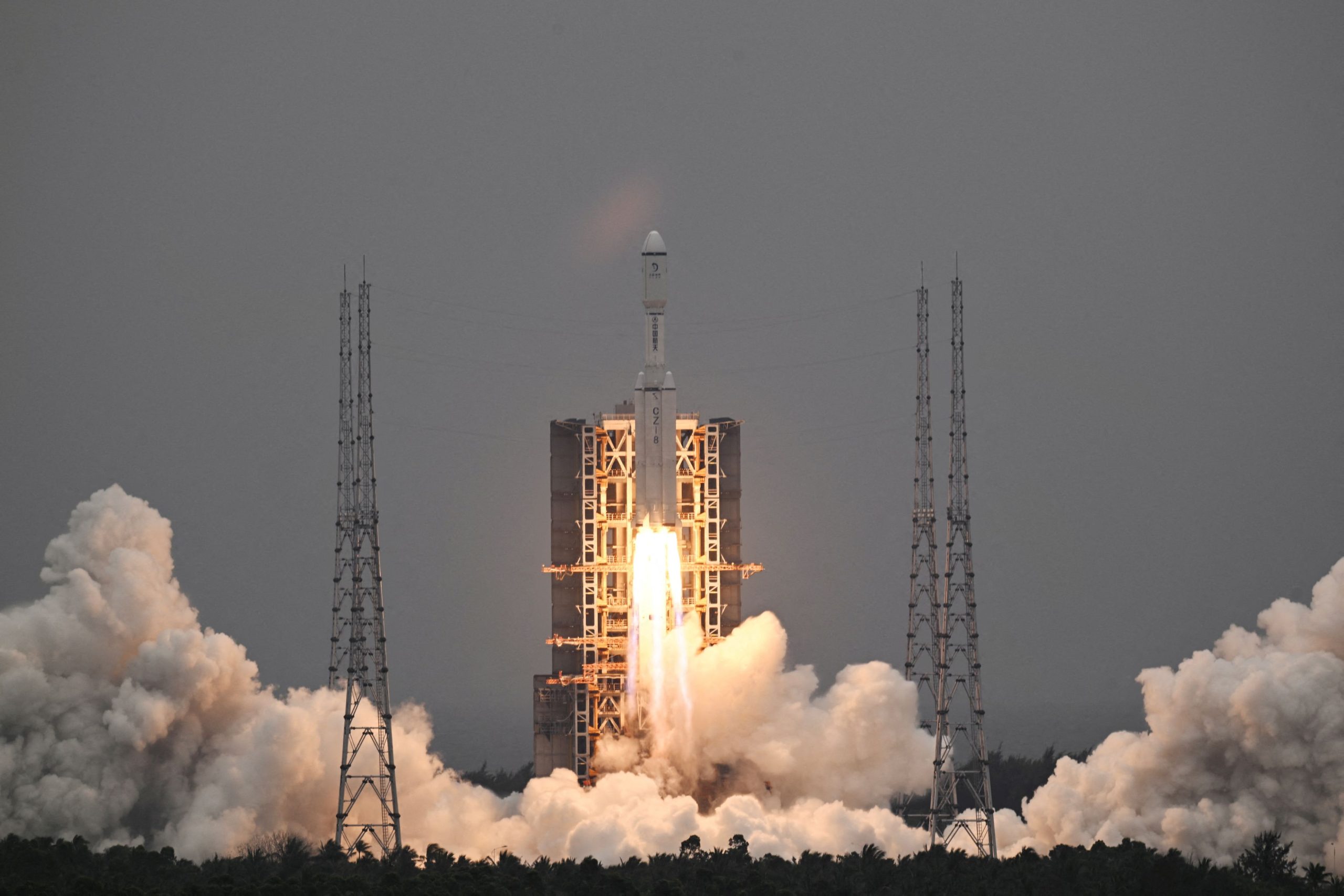Human history has been defined by contests of power—first for land, then for dominance at sea, and later through the relentless pursuit of technological superiority. Each era brought a new frontier, a new battleground.
Today, the focus has shifted again. Artificial intelligence is reshaping not only economies but the very fabric of human potential—pitting man not just against man, but increasingly against machine. And yet, even as we grapple with the implications of AI, our collective gaze is drifting upward.
Space—the vast, unclaimed expanse we’ve long romanticised—is fast becoming the next arena of competition. Not merely a backdrop for science fiction, it now represents something far more immediate: geopolitical leverage, economic opportunity, and perhaps, the future of civilisation itself.
Influential figures in today’s AI revolution now look skyward. Billionaire entrepreneurs such as Jeff Bezos, Richard Branson and Elon Musk, drive a race defined by privately funded rockets, ambitious lunar missions, and visions of colonies on Mars. Their efforts highlight an emerging reality: artificial intelligence, though significant, forms only part of a broader cosmic narrative. The urgency of their rivalry shows how personal ambitions increasingly merge with national interests, reshaping our shared vision of progress.
Space technology—satellites in particular—already underpins modern life. It influences global communications, economic stability, military strategy, and the nuanced sphere of diplomacy. Interconnected reliance inevitably leads to defined spheres of influence, territorial ambitions, and heightened geopolitical tensions as earthly rivalries extend into orbit. Innovations from companies like Musk’s SpaceX dramatically reduce the costs of space travel. Advances such as reusable rockets and satellite miniaturisation already transformed space exploration. Orbital activities are economically viable and accessible on an unprecedented scale.
Governments still fund most major space programs, like those of the US, China, Russia, and the European Space Agency. However, private investment is growing rapidly. In the United States alone, private sector investment in space-related research and development has surged from roughly $1 billion annually a decade ago to between $5 billion and $6 billion in 2021. Commercial enterprises see high risks but also enormous potential profits. Recent selenology findings include rare-earth elements and water. Helium-3 is an example, scarce on Earth but abundant on the Moon. It is an isotope with potential for nuclear fusion—a powerful, clean energy source. China’s leading lunar scientist, Ouyang Ziyuan, suggests harnessing helium-3 could solve humanity’s energy demands for millennia.
Private acts have dramatically lowered barriers to space access. Simultaneously, major global powers showcase capabilities signalling military ambitions in orbit. They pursue space challenges for prestige, commercial interests, and strategic advantages. The Artemis missions to return to the Moon are an example. They include planned lunar bases by the USA and the Sino-Russian alliance, illustrating diverse motivations. Using the Moon as a launch pad for Mars missions and mining resources are now prime goals. Deposits of metal oxides, silicon, titanium, rare-earth elements, and aluminium are crucial for modern technology. Many state actors seeking independence from China’s dominant position in rare-earth reserves are incentivised to pursue lunar resources aggressively.
No longer simply a frontier for exploration, it is an extension of our geopolitical landscape. An environment where national interests, corporate agendas, and the familiar intricacies of history, politics, and human conflict converge. It is no longer just about who leads on Earth. It is about who reaches beyond it.
The present moment, unlike the Cold War era, demands nations not merely explore but firmly establish their presence. It demands asserting interests and actively participating in this new domain. it’s a stage. Show up, or be left behind. It is rapidly emerging as one of the defining geopolitical narratives of the 21st century. The United States, China, and Russia currently lead this race. Around 80 countries now have a presence in space, demonstrating a global expansion of ambitions. Nations such as the United Arab Emirates and Israel pushed forward missions to Mars and attempts to land on the Moon. Although most of them recognise a relevant inability to match the respective leading powers, they still strive to influence decisions. These nations are carefully evaluating their positions and forming strategic alliances—so-called ‘space blocs’—to amplify voices and safeguard interests.
Military dimensions now shape the contours of the new space race. Recognising orbit as a potential theatre of conflict, both the United States and China have formalised ambitions with dedicated space forces. The U.S. Space Force, established in 2019, as the first new military branch in over 70 years, is tasked with organising, training, and equipping personnel to protect American assets in space—from satellites to surveillance infrastructure. It operates under the premise that space is not only a strategic domain but a potential battlefield.
China’s approach is equally assertive. The People’s Liberation Army Strategic Support Force, formed in 2015, integrates space, cyber, and electronic warfare, reflecting Beijing’s commitment to information dominance across domains. Its remit includes satellite operations, anti-satellite weaponry, and securing communications critical to both civilian and military systems.
Space is no longer just for operation—it’s for contest. Satellites, once passive tools, are now prime targets. They power everything from missile warnings to global comms; disable them, and nations go blind. Colonising the Moon isn’t just symbolic—it’s strategic. Like sea power once was, lunar presence means control over critical space assets and positions. First there, first in charge.
Space exploration also presents significant opportunities for international cooperation and scientific advancement. Collaborative efforts, exemplified by the historic ‘handshake in space’ between Russian and American astronauts and the operation of the International Space Station, illustrate space’s potential to unite humanity. Russia’s invasion of Ukraine, though, has strained these partnerships, revealing the urgent need for clear international rules. Without them, space—once seen as a global commons—faces rising tensions and familiar patterns of Earthbound antagonism. As Tim Marshall’s new bestseller warns, geopolitics is heading skyward. Astropolitics are on the menu.
Dimitris Kollias is Junior Research Fellow at ELIAMEP.



